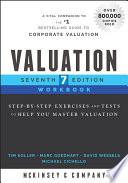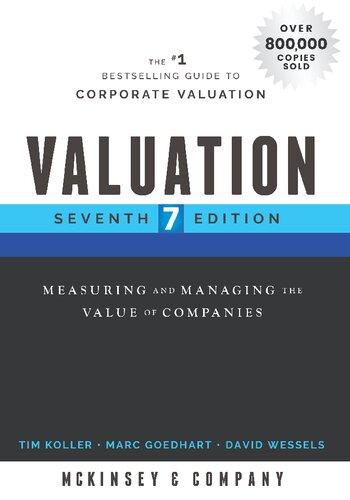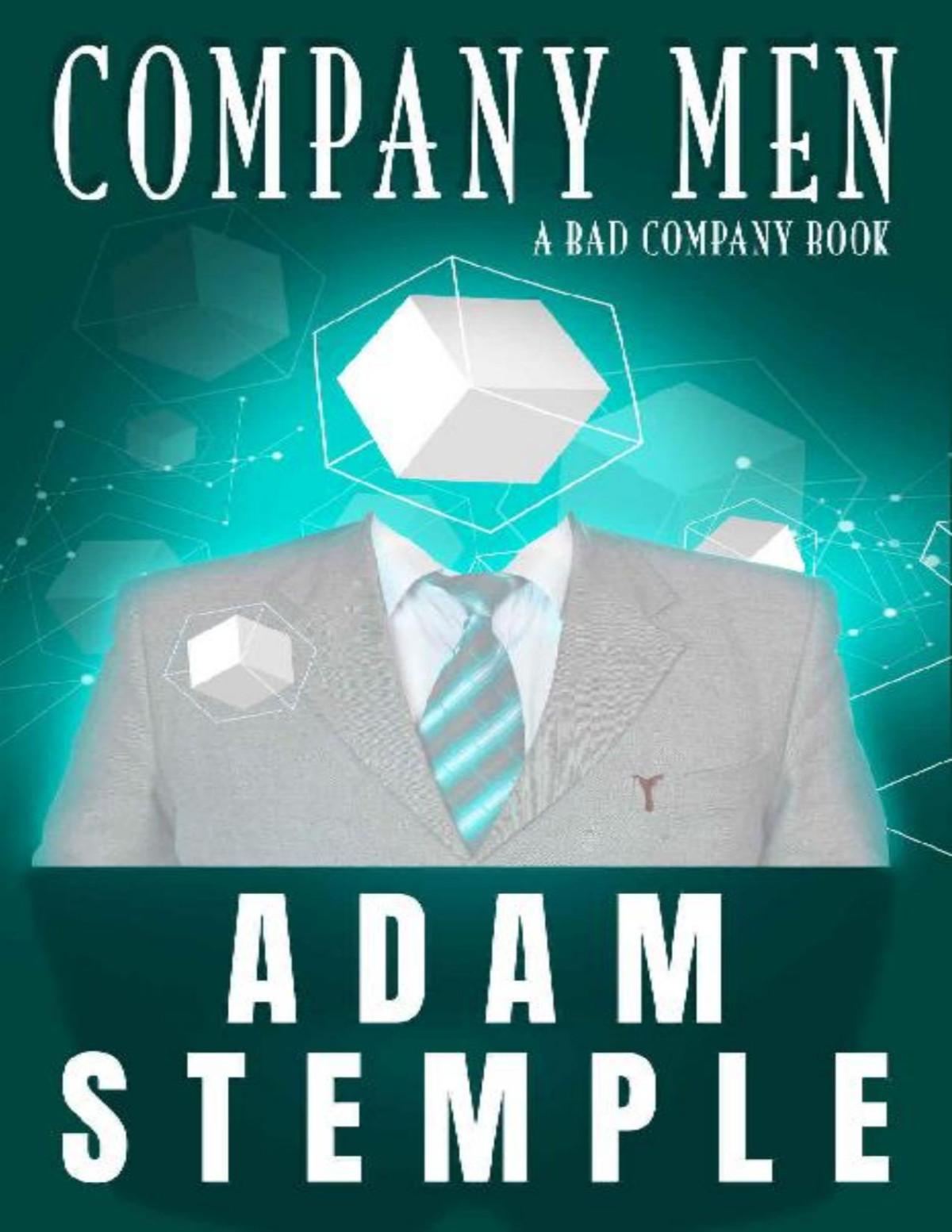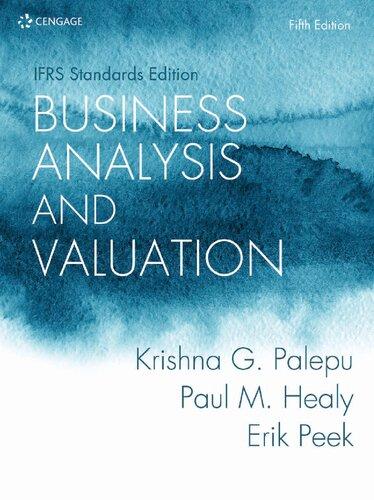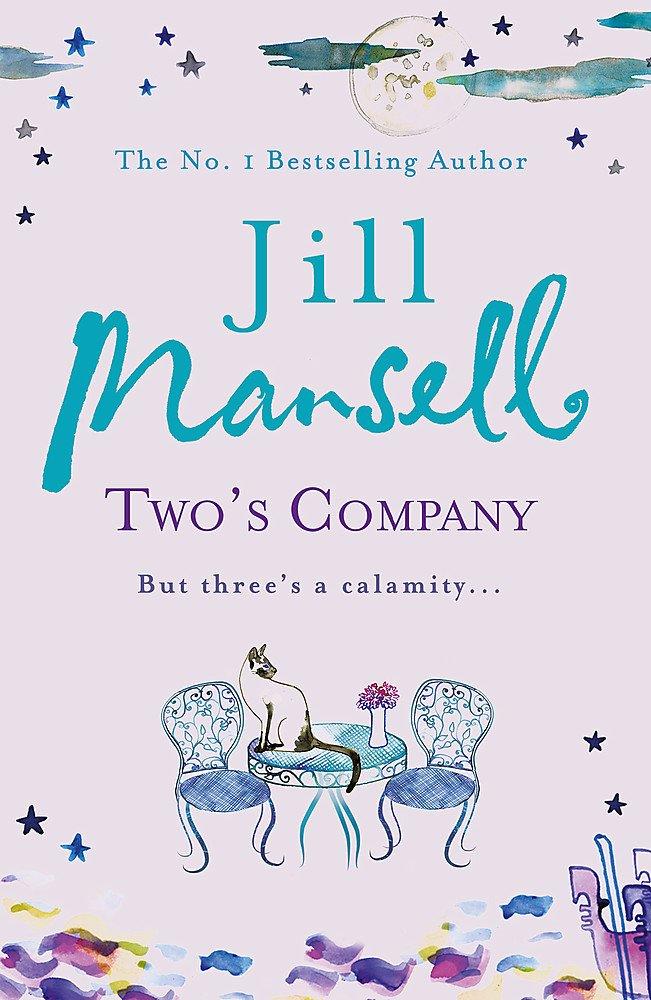Visit to download the full and correct content document: https://ebookmass.com/product/valuation-workbook-7th-edition-mckinsey-company-in c/
More products digital (pdf, epub, mobi) instant download maybe you interests ...
Valuation: Measuring and Managing the Value of Companies 7th Edition Tim Koller
https://ebookmass.com/product/valuation-measuring-and-managingthe-value-of-companies-7th-edition-tim-koller/
Elsevier Weekblad - Week 26 - 2022 Gebruiker
https://ebookmass.com/product/elsevier-weekbladweek-26-2022-gebruiker/
Content Inc. Joe Pulizzi
https://ebookmass.com/product/content-inc-joe-pulizzi/
Company Men (The Bad Company Books Book 2) Adam Stemple
https://ebookmass.com/product/company-men-the-bad-company-booksbook-2-adam-stemple/
Two's Company 1st Edition Jill Mansell
https://ebookmass.com/product/twos-company-1st-edition-jillmansell/
Business Analysis and Valuation: IFRS edition Erik Peek
https://ebookmass.com/product/business-analysis-and-valuationifrs-edition-erik-peek/
Starfinder RPG: Starfinder Enhanced 1st Edition Paizo Inc.
https://ebookmass.com/product/starfinder-rpg-starfinderenhanced-1st-edition-paizo-inc/
Jock Seeks Geek: The Holidates Series Book #26 Jill Brashear
https://ebookmass.com/product/jock-seeks-geek-the-holidatesseries-book-26-jill-brashear/ Two's Company Jill Mansell [Mansell
https://ebookmass.com/product/twos-company-jill-mansellmansell-3/
VALUATION WORKBOOK
TheWileyFinanceseriescontainsbookswrittenspecificallyforfinanceandinvestment professionalsaswellassophisticatedindividualinvestorsandtheirfinancialadvisors. Booktopicsrangefromportfoliomanagementtoe-commerce,riskmanagement,financialengineering,valuationandfinancialinstrumentanalysis,aswellasmuchmore.For alistofavailabletitles,visitourWebsiteat www.WileyFinance.com Foundedin1807,JohnWiley&Sonsistheoldestindependentpublishingcompany intheUnitedStates.WithofficesinNorthAmerica,Europe,AustraliaandAsia,Wiley isgloballycommittedtodevelopingandmarketingprintandelectronicproductsand servicesforourcustomers’professionalandpersonalknowledgeandunderstanding.
VALUATION WORKBOOK
SEVENTHEDITION
McKinsey&Company
TimKoller
MarcGoedhart
DavidWessels
MichaelCichello
Copyright©1990,1994,2000,2005,2010,2015,2021byMcKinsey&Company.Allrightsreserved
PublishedbyJohnWiley&Sons,Inc.,Hoboken,NewJersey. PublishedsimultaneouslyinCanada.
Nopartofthispublicationmaybereproduced,storedinaretrievalsystem,ortransmittedinanyform orbyanymeans,electronic,mechanical,photocopying,recording,scanning,orotherwise,exceptas permittedunderSection107or108ofthe1976UnitedStatesCopyrightAct,withouteithertheprior writtenpermissionofthePublisher,orauthorizationthroughpaymentoftheappropriateper-copy feetotheCopyrightClearanceCenter,Inc.,222RosewoodDrive,Danvers,MA01923,(978)750–8400, fax(978)646–8600,orontheWebat www.copyright.com.RequeststothePublisherforpermission shouldbeaddressedtothePermissionsDepartment,JohnWiley&Sons,Inc.,111RiverStreet, Hoboken,NJ07030,(201)748–6011,fax(201)748–6008,oronlineat www.wiley.com/go/permissions.
LimitofLiability/DisclaimerofWarranty:Whilethepublisherandauthorhaveusedtheirbestefforts inpreparingthisbook,theymakenorepresentationsorwarrantieswithrespecttotheaccuracyor completenessofthecontentsofthisbookandspecificallydisclaimanyimpliedwarrantiesof merchantabilityorfitnessforaparticularpurpose.Nowarrantymaybecreatedorextendedbysales representativesorwrittensalesmaterials.Theadviceandstrategiescontainedhereinmaynotbe suitableforyoursituation.Youshouldconsultwithaprofessionalwhereappropriate.Neitherthe publishernorauthorshallbeliableforanylossofprofitoranyothercommercialdamages,including butnotlimitedtospecial,incidental,consequential,orotherdamages.
Forgeneralinformationonourotherproductsandservicesorfortechnicalsupport,pleasecontact ourCustomerCareDepartmentwithintheUnitedStatesat(800)762–2974,outsidetheUnitedStates at(317)572–3993,orfax(317)572–4002.
Wileypublishesinavarietyofprintandelectronicformatsandbyprint-on-demand.Somematerial includedwithstandardprintversionsofthisbookmaynotbeincludedine-booksorin print-on-demand.IfthisbookreferstomediasuchasaCDorDVDthatisnotincludedintheversion youpurchased,youmaydownloadthismaterialat http://booksupport.wiley.com.Formore informationaboutWileyproducts,visit www.wiley.com
LibraryofCongressCataloging-in-PublicationData:
Clothedition:ISBN978-1-119-61088-5
ClotheditionwithDCFModelDownload:ISBN978-1-119-61246-9
Universityedition:ISBN978-1-119-61186-8
Workbook:ISBN978-1-119-61181-3
DCFModelDownload:978-1-119-61086-1
Coverdesign:Wiley
PrintedintheUnitedStatesofAmerica. 10987654321
PartOneQuestions
1WhyValueValue?3
2FinanceinaNutshell5
3FundamentalPrinciplesofValueCreation7
4RiskandtheCostofCapital11
5TheAlchemyofStockMarketPerformance15
6ValuationofESGandDigitalInitiatives19
7TheStockMarketIsSmarterThanYouThink21
8ReturnonInvestedCapital27
9Growth31
10FrameworksforValuation35
11ReorganizingtheFinancialStatements39
12AnalyzingPerformance43
13ForecastingPerformance47
14EstimatingContinuingValue51
15EstimatingtheCostofCapital55
16MovingfromEnterpriseValuetoValueperShare59
17AnalyzingtheResults63
18UsingMultiples67
19ValuationbyParts71
20Taxes75
21NonoperatingItems,Provisions,andReserves77
22Leases81
23RetirementObligations83
24MeasuringPerformanceinCapital-LightBusinesses85
25AlternativeWaystoMeasureReturnonCapital89
26Inflation91
27Cross-BorderValuation95
28CorporatePortfolioStrategy99
29StrategicManagement:Analytics103
30StrategicManagement:MindsetsandBehaviors107
31MergersandAcquisitions111
32Divestitures115
33CapitalStructure,Dividends,andShareRepurchases119
34InvestorCommunications123
35EmergingMarkets127
36High-GrowthCompanies129
37CyclicalCompanies131
38Banks135
39Flexibility139
PartTwoSolutions
1WhyValueValue?145
2FinanceinaNutshell147
3FundamentalPrinciplesofValueCreation149
4RiskandtheCostofCapital151
5TheAlchemyofStockMarketPerformance153
6ValuationofESGandDigitalInitiatives155
7TheStockMarketIsSmarterThanYouThink157
8ReturnonInvestedCapital159
9Growth161
10FrameworksforValuation163
11ReorganizingtheFinancialStatements165
12AnalyzingPerformance167
13ForecastingPerformance169
14EstimatingContinuingValue173
15EstimatingtheCostofCapital175
16MovingfromEnterpriseValuetoValueperShare177
17AnalyzingtheResults179
18UsingMultiples181
19ValuationbyParts183
20Taxes185
21NonoperatingItems,Provisions,andReserves187
22Leases189
23RetirementObligations193
24MeasuringPerformanceinCapital-LightBusinesses195
25AlternativeWaystoMeasureReturnonCapital197
26Inflation199
27Cross-BorderValuation203
28CorporatePortfolioStrategy207
29StrategicManagement:Analytics209
30StrategicManagement:MindsetsandBehaviors211
31MergersandAcquisitions213
32Divestitures215
33CapitalStructure,Dividends,andShareRepurchases217
34InvestorCommunications219
35EmergingMarkets223
36High-GrowthCompanies225
37CyclicalCompanies227
38Banks229
39Flexibility231 Index233
AbouttheAuthors
Theauthors,collectively,havemorethan100yearsofexperienceinconsulting andfinancialeducation.
TimKoller isapartnerinMcKinsey’sStamford,Connecticut,office,where heisafounderofMcKinsey’sStrategyandCorporateFinanceInsightsteam, aglobalgroupofcorporate-financeexpertconsultants.Inhis35yearsin consulting,Timhasservedclientsgloballyoncorporatestrategyandcapital markets,mergersandacquisitionstransactions,andstrategicplanningand resourceallocation.Heleadsthefirm’sresearchactivitiesinvaluationand capitalmarkets.BeforejoiningMcKinsey,heworkedwithSternStewart &CompanyandwithMobilCorporation.HereceivedhisMBAfromthe UniversityofChicago.
MarcGoedhart isaseniorexpertinMcKinsey’sAmsterdamofficeand endowedprofessorofcorporatevaluationatRotterdamSchoolofManagement,ErasmusUniversity(RSM).Overthepast25years,Marchasserved clientsacrossEuropeonportfoliorestructuring,M&Atransactions,and performancemanagement.HereceivedhisPhDinfinancefromErasmus University.
DavidWessels isanadjunctprofessoroffinanceattheWhartonSchoolof theUniversityofPennsylvania.Namedby BloombergBusinessweek asoneof America’stopbusinessschoolinstructors,heteachescoursesoncorporatevaluationandprivateequityattheMBAandexecutiveMBAlevels.Davidisalso adirectorinWharton’sexecutiveeducationgroup,servingontheexecutive developmentfacultiesofseveralFortune500companies.Aformerconsultant withMcKinsey,hereceivedhisPhDfromtheUniversityofCaliforniaatLos Angeles.
MichaelCichello isafinanceprofessorattheMcDonoughSchoolofBusiness atGeorgetownUniversity.Heteachescorporatevaluationtoundergraduate, MBA,andExecutiveMBAstudentsandworkswithexecutivesofseveralFortune500companiestoimplementvalue-creatingopportunities.Michaelalso helpedcreateGeorgetown’stop-rankedOnlineMasterofScienceinFinance program.Hisresearchexploresmanagerialincentives,corporategovernance, andfinancialcontractingschemes.ProfessorCichelloreceivedaPhDinfinance fromMichiganStateUniversity.
McKinsey&Company isaglobalmanagementconsultingfirmcommittedto helpingorganizationscreatechangethatmatters.Inmorethan130citiesand 65countries,teamshelpclientsacrosstheprivate,public,andsocialsectors shapeboldstrategiesandtransformthewaytheywork,embedtechnology whereitunlocksvalue,andbuildcapabilitiestosustainthechange.Notjust anychange,butchangethatmatters—fortheirorganizations,theirpeople,and inturnsocietyatlarge.
Introduction
Thepurposeofanyworkbookistoactivelyengagethereader/learnerinthe transferofknowledgefromauthortoreader.Althoughtherearemanylevels atwhichknowledgecanbetransferred,the ValuationWorkbook endeavorsto providethefollowingthreeservices:
1.Awalk-throughaccompanimentto Valuation:MeasuringandManaging theValueofCompanies,seventhedition
2.Asummaryofeachchapter
3.Testsofcomprehensionandskillsofmanytypes
Multiple-choicequestionspiqueyourmemoryasyoureadthetext.Lists andtablecompletionsforceyoutoactivelyrearrangeconcepts,explicitlyor implicitly,withinthetext.Calculationquestionsallowyoutoapplytheskills deployedbytheauthorsinaccomplishingtheanalysiscalledvaluation.
Ouraimistoencourageyoutoquestionwhatyoureadagainstthe backgroundofyourownbusinessexperienceandtothinkaboutnewwaysto analyzeandapproachvaluationissues.
PartOne Questions
WhyValueValue?
Thechiefmeasuresforjudgingacompanyareitsabilitytocreatevalueforits shareholdersandtheamountoftotalvalueitcreates.Corporationsthatcreatevalueinthelongtermtendtoincreasethewelfareofshareholdersand employeesaswellasimprovecustomersatisfaction;furthermore,theytend tobehavemoreresponsiblyascorporateentities.Ignoringtheimportanceof valuecreationnotonlyhurtsthecompanybutleadstodetrimentalresultssuch asmarketbubbles.
Valuecreationoccurswhenacompanygeneratescashflowsatratesof returnthatexceedthecostofcapital.Accomplishingthisgoalusuallyrequires thatthecompanyhaveacompetitiveadvantage.Activitiessuchasleverage andaccountingchangesdonotcreatevalue.Frequently,managersshortsightedlyemphasizeearningspershare(EPS);infact,apollofmanagersfoundthat mostmanagerswouldreducediscretionaryvalue-creatingactivitiessuchas researchanddevelopment(R&D)inordertomeetshort-termearningstargets. Onemethodtomeetearningstargetsistocutcosts,whichmayhaveshort-term benefitsbutcanhavelong-rundetrimentaleffects.
1.DatafrombothEuropeandtheUnitedStatesfoundthatcompanies thatcreatedthemostshareholdervalueshowed____________employmentgrowth.
2.The_______________inthelate1990s,andthe___________in2007–08, aroselargelybecausecompaniesandbanksfocusedon___________ over____________.
3.Maximizingcurrentsharepriceisnotequivalenttomaximizing long-termvaluebecause____________.
4.Discretionaryexpensesthatmanagerscanslashinordertopumpup short-termprofitsinclude____________.
5.DuringtheInternetboomofthelate1990s,manyfirmslostsightof valuecreationprinciplesbyblindlypursuing____________without ____________.
6.Theempiricalevidenceshowsthatthelinkbetweenthevaluecreated bytheacquisitionofanothercompanyandearningspershare(EPS):
A.Isstrongandpositive.
B.Doesnotexist.
C.Isweakandnegative.
D.Isstrongandnegative.
7.Payingattentiontowhichofthefollowingtendstoleadtoacompany creatinglong-termvalueforshareholders?
I.Cashflow.
II.Earningspershare.
III.Growth.
IV.Returnoninvestedcapital.
A.IandIIonly.
B.IIandIIIonly.
C.II,III,andIVonly.
D.I,III,andIVonly.
8.Afirmthatgrowsrapidlywill:
A.Alwayscreatevalue.
B.Createvalueifthereturnoninvestedcapital(ROIC)isgreaterthan thecostofobtainingfunds.
C.Createvalueifthereturnoninvestedcapital(ROIC)islessthanthe costofobtainingfunds.
D.Createvalueifthefirmincreasesmarketshare.
9.Inordertocreatelong-termvalue,companiesmust:
A.Focusonkeepingcostsataminimum.
B.Findtheoptimaldebt-to-equityratio.
C.Seekandexploitnewsourcesofcompetitiveadvantage.
D.Monitorandfollowmacroeconomictrends.
10.Focusonshort-termresultsbybankswasacontributingfactortothe financialcrisisof2007–08.
A.True
B.False
FinanceinaNutshell
Companiescreatevaluewhentheyearnareturnoninvestedcapital(ROIC) greaterthantheiropportunitycostofcapital.IftheROICisatorbelowthe costofcapital,growthmaynotcreatevalue.Companiesshouldaimtofind thecombinationofgrowthandROICthatdrivesthehighestdiscountedvalue oftheircashflows.Insodoing,theyshouldconsiderthatperformanceinthe stockmarketmaydifferfromintrinsicvaluecreation,generallyasaresultof changesininvestors’expectations.
Toillustratehowvaluecreationworks,thischapterfollowsacompany fromitsearlyyearsthroughgoingpublic.Throughoutthediscussion,attention isgiventokeymeasuresofperformance,suchasROIC,growth,andcompany valuebasedondiscountedcashflow(DCF).Fivecoreideasaroundvaluecreationanditsmeasurementareillustrated:
1.Intherealmarket,youcreatevaluebyearningareturnonyourinvested capitalgreaterthantheopportunitycostofcapital.
2.Themoreyoucaninvestatreturnsabovethecostofcapital,themore valueyoucreate.Thatis,growthcreatesmorevalueaslongasthereturn oninvestedcapitalexceedsthecostofcapital.
3.Youshouldselectstrategiesthatmaximizethepresentvalueoffuture expectedcashflowsoreconomicprofit(EP).Theansweristhesame regardlessofwhichapproachyouchoose.
4.Thevalueofacompany’ssharesinthestockmarketequalstheintrinsic valuebasedonthemarket’sexpectationsoffutureperformance,butthe market’sexpectationsoffutureperformancemaynotbethesameasthe company’s.
5.Thereturnsthatshareholdersearndependonchangesinexpectations asmuchasontheactualperformanceofthecompany.
1.Lily’sEmporiumcreatesvalueifitgeneratesa________returnonits investedcapital(ROIC)thanwhattheycouldearniftheyinvestedtheir capitalelsewhere.
2.Logan’sStores’superiorgrowthoverLily’sDresseswasnottranslating intoa________ROICbecauseLogan’sStoreshadtoinvest________ inordertogrowandhada________differentiatedproductthanLily’s Dresses.
3.LilyandNatecanaddressthetrade-offbetweenshort-termdeclinein ROICandlong-termincreaseinROICbyestimatingwhethertheexpansionisvaluablethrough________________________.
4.LilyandNateshouldkeepthe________-performingstoresopen becauseeventhoughtheyhave________ROICsthantheotherstores, these________-performingstoresstillhaveROICs________thanthe costofcapital.Thus,thesestoresstillcreateadditional___________by stayingopen.
5.TheintrinsicvalueofLily’sEmporiumisbasedonthe________________ ________,whilethesharepriceisbasedon________________________. InvestorswouldwanttobuyLily’sstockwhentheirintrinsicvalue estimateis________thanthecurrentstockprice.
6.AsLily’sEmporiumexpands,itneedsaplanningandcontrolsystem thatincorporatesboth________-and________-lookingmeasuresthat are________________.
7.(True/False)SupposethataninvestorboughtsharesinLily’sEmporium andheldthemforfiveyears.IfthefirmgeneratedROICsabovetheir costofcapital,thismeansthattheinvestorhadreturnsabovethecost ofcapital.
8.(True/False)BoththeDCFandEPmethodsshouldyieldthesamevaluationsifproperlyapplied.
FundamentalPrinciplesof ValueCreation
Earningsgenerationandvaluecreationarecorrelatedoverthelongrun,but theyarenotthesame.Valuecreationisdeterminedbycashflows,whichcan bedisaggregatedintorevenuegrowthandreturnoninvestedcapital(ROIC). Foranylevelofgrowth,increasingROICincreasesvalue;however,thereverse isnottrue.WhenROICisgreaterthanthecostofcapital,increasinggrowth increasesthevalueofthefirm;whenROICislessthanthecostofcapital, increasinggrowthdecreasesthefirm’svalue.WhenROICequalsthecostof capital,growthdoesnotaffectafirm’svalue.
Fortheyears1995to2018,RockwellAutomationprovidesagoodexample oftheimportanceofincreasingROIC.Overtheperiod,revenueshrankby3 percentperyear,butROICincreasedfrom12percentto35percent,witha resultingannualtotalreturntoshareholdersof19percentperyear.
Thekeyvaluedriverformula,is:
whereNOPATisthenetoperatingprofitaftertaxes.
Becausetheformulaassumestherelationshipsarestatic,ithassomelimitationsonitsapplicationinpractice;however,itdoesoutlinetheimportant relationshipsthatdetermineanddrivevalue.PartTwoofthetextexpandson theformula.
1.Rankthetypesofgrowthfromhighesttolowest,wherehighest = 1,in termsoftheamountofshareholdervalueeachtypicallycreatesfrom thesameincrementalincreaseinrevenue.
TypesofgrowthRanking
A.Increaseshareinagrowingmarket.1.
B.Expandanexistingmarket.2.
C.Acquirebusinesses.3.
D.Introducenewproductstomarket.4.
2.High-ROICcompaniestypicallycreatemorevalueby_________,while lower-ROICcompaniescreatemorevalueby__________.
3.Mostofteninmaturecompanies,alowROICindicates________.
4.Completethefollowingsentenceconcerningtherelationshipsamong earnings,cashflow,andvalue.Earningsandcashflowareoften ____________,butearningsdon’ttellthewholestoryofvalue creation,andfocusingtoomuchonearningsorearningsgrowth ________________________.
5.WhenROICisgreaterthanthecostofcapital,therelationshipbetween growthandvalueis____________.WhenROICislessthanthecost ofcapital,therelationshipbetweengrowthandvalueis____________. WhenROICequalsthecostofcapital,therelationshipbetweengrowth andvalueis____________.
6.Withrespecttocountries,thecorevaluationprincipleis____________, asmadeevidentbythefactthatU.S.companiestrade____________ companiesinothercountries.
7.Whencomparingtheeffectofanincreaseingrowthonahigh-ROIC companyandalow-ROICcompany,a1percentincreaseingrowthwill have____________.
8.AthighlevelsofROIC,improvingROICbyincreasingmarginswill create__________valuethananequivalentROICincreasebyimprovingcapitalproductivity.
9.Economicprofitisthespreadbetween__________and_________times ______________.
10.Ifthegrowthofacompanyis2percentandtheROICis10percent, whatistheinvestmentrate?
A.2percent.
B.5percent.
C.12percent.
D.20percent.
11.Foragivencompany,nextyear’sNOPATis$300.Fortheforeseeable future,thegrowthratewillbe5percent,theROICwillbe15percent, andtheweightedaveragecostofcapital(WACC)willbe13percent. Usingthekeydriverformula,calculatethevalueofthecompany.
A.$1,666. B.$2,222. C.$2,500. D.$2,750.
12.Changingcapitalstructurecreatesvalueonlyifit____________.
13.Anacquisitionwillcreatevalueonlyifitincreasescashflowsby ________________.
14.Whenthelikelihoodofinvestingcashat________is_____,sharerepurchasesmakesenseasatacticforavoidingvaluedestruction.
15.Withrespecttovaluecreation,definefinancialengineering.
16.Becauseinterestexpenseistaxdeductible,sharerepurchasescanhave thebeneficialeffectof____________,butthismaynotincreaseshare pricebecause____________.
17.Studiesofsharerepurchaseshaveshownthatcompanies_________at timingsharerepurchases,often______________.
Riskandthe CostofCapital
Acompany’scostofcapitaliscriticalfordeterminingvaluecreationandfor evaluatingstrategicdecisions.Itistherateatwhichyoudiscountfuturecash flowsforacompanyorproject.Itisalsotherateyoucomparewiththereturn oninvestedcapitaltodetermineifthecompanyiscreatingvalue.Thecostof capitalincorporatesboththetimevalueofmoneyandtheriskofinvestment inacompany,businessunit,orproject.
Thecostofcapitalisanopportunitycost,basedonwhatinvestorscould earnbyinvestingtheirmoneyelsewhereatthesamelevelofrisk.Onlydiversifiablerisksaffectacompany’scostofcapital.Otherrisks,whichcanbediversified,shouldonlybereflectedinthecashflowforecastusingmultiplecashflow scenarios.
Companiesshouldtakeonallinvestmentsthathaveapositiveexpected value,regardlessoftheirriskprofile,unlesstheprojectsaresolargethatfailurewouldthreatentheviabilityoftheentirecompany.Mostexecutivesare reluctanttotakeonsmallerriskyprojectsevenifthereturnsareveryhigh.
Theabilityofinvestorstodiversifytheirportfoliosmeansthatonlynondiversifiableriskaffectsthecostofcapital.Companiesinthesameindustrywill havesimilarcostsofcapital.Theriskstheycannotdiversifyawayarethose thataffectallcompanies—forexample,exposuretoeconomiccycles.
Certainprojectscarrywhatmanyinvestorsseeashighrisk.Companies shouldnotbumpuptheassumedcostofcapitaltoreflecttheuncertaintyof riskyprojects.Indoingso,theyoftenenduprejectinggoodinvestmentopportunitiesasaresult.Abetterapproachfordeterminingtheexpectedvalueof aprojectistodevelopmultiplecashflowscenarios,valuethemattheunadjustedcostofcapital,andthenapplyprobabilitiesforthevalueofeachscenario toestimatetheexpectedvalueoftheprojectorcompany.
Usingscenarioshasseveraladvantages,including(1)providingdecision makerswithmoreinformation;(2)encouragingmanagerstodevelopstrategiestomitigatespecificrisks;and(3)acknowledgingthefullrangeofpossible outcomes.
Intheory,acompanyshouldtakeonallprojectsorgrowthopportunities thathavepositiveexpectedvaluesevenifthereishighlikelihoodoffailure, aslongastheprojectissmallenoughthatfailurewillnotputthecompany infinancialdistress.Inpractice,companiestendtooverweighttheimpactof lossesfromsmallerprojects,therebymissingvaluecreationopportunities.
Executivesmakingdecisionsfortheircompaniesshouldthinkaboutthe company’sriskprofile,nottheirown.Corporationsaredesignedtotake risksandovercomethenaturallossaversionofindividuals.Toovercomeloss aversionandmakebetterinvestmentdecisions,individualsandorganizations mustlearntoframechoicesinthecontextoftheentirecompany’ssuccess,not theindividualproject’sperformance.
Althoughhedgingmayreducetheshort-termcashflowvolatility,itwill havelittleeffectonthecompany’svaluationbasedonlong-termcashflows. Somerisks,likethecommoditypriceriskinthisexample,canbemanagedby shareholdersthemselves.Otherrisks,suchassomeformsofcurrencyrisk,are harderforshareholderstomanage.Thegeneralruleistoavoidhedgingthe firsttypeofriskbuthedgethesecondifpossible.
1.Afirm’scostofcapitalisdrivenbyinvestors’____________,because firmmanagershaveafiduciaryresponsibilitytothecompany’s investors.
2.Thecostofcapitalincorporatesboththe____________andthe ____________inacompany,businessunit,orproject.
3.Withinacompany,individualbusinessunitscanhavedifferentcostsof capitalif________________.
4.Theabilityofinvestorstodiversifytheirportfoliosmeansthatonly ____________riskaffectsthecostofcapital.
5.Because____________riskgenerallyaffectsallcompaniesinthesame industryinthesameway,acompany’s____________iswhatprimarily drivesitscostofcapital.
6.Certainprojectscarryhighrisks.Managersshouldnotignore theserisks,butshouldexplicitlyincludethemin____________, not_______________.
7.Someadvantagestousingascenarioexpectedcashflowapproachover anadhocriskpremiumapproachwhenevaluatinghigh-riskprojects are:
8.Managersshouldtakeonallprojectsorgrowthopportunitiesthathave ___________________evenifthereishighlikelihoodoffailure,solong astheprojectis__________________________.
9.Managersshouldhedgetherisksthat__________________________.
TheAlchemyofStock MarketPerformance
Theexpectationstreadmillisthenameforaproblemfacedbyhigh-performing managerswhotrytomeetthehighmarketexpectationsthatresultfromthe highlevelofperformanceinrecentperiods.It’sthereasonthat,intheshort term,extraordinarymanagersmaydeliveronlymediocretotalshareholder returns(TSR).It’salsothedynamicbehindtheadagethatagoodcompanyand agoodinvestmentmaynotbethesame.Anexampleofthisisacomparison ofthecompanyandstockperformanceofTysonFoodsandJ&JSnackFoods from2013to2017.AlthoughJ&JoutperformedTysoninbothrevenuegrowth andROIC,theannualizedTSRswere14and27percent,respectively.Investors inJ&JhadveryhighexpectationsrelativetoinvestorsinTyson,asillustrated byEV/NOPATmultiplesforJ&Jbeing1.4to2.2timesthoseofTyson.
DecomposingTSRcangivebetterinsightsintoacompany’strueperformanceandinsettingnewtargets.Thereisalreadythetraditionalmethodof decomposingTSRintothreeparts:(1)percentchangeinearnings,(2)percent changeinP/E,and(3)dividendyield.Aclearerpicturecanbefoundfrom breakingTSRintofiveparts:(1)thevaluegeneratedfromrevenuegrowth,(2) investmentrequiredtogeneraterevenuegrowth,(3)theimpactofachange inmarginonnetincomegrowth,(4)thestartingratioofnetincometomarketvalue,and(5)thechangeintheP/Eratio.Amorethoroughanalysiscan explainwhyasmalldeclineinTSRintheshortruntoadjustexpectationsmay bepreferabletodesperatelytryingtomaintainTSRthroughill-advisedacquisitionsandventures.
UsethefollowingfinancialstoanswerQuestions1through4.
1.WhatistheTSRfromperformance?
A. 2.0percent. B. 0.5percent. C.4.5percent. D.6.7percent.
2.Whatisthedividendyield?
A.4.2percent. B.4.8percent. C.5.0percent. D.6.0percent.
3.Whatisthezero-growthreturn?
A.8.3percent. B.10.5percent. C.12.5percent. D.15.3percent.
4.WhatistheTSR?
A.14.0percent. B.15.0percent. C.15.5percent. D.20.0percent.
5.Usingthetraditionalapproach,ananalystcanbreakdownTSRintotwo orthreecomponents.
Listthecomponentsinthetwo-componentbreakdown: A.___________________________________________________________ B.___________________________________________________________
Listthecomponentsinthethree-componentbreakdown: A.___________________________________________________________ B.___________________________________________________________ C.___________________________________________________________
